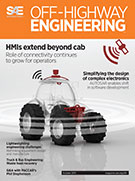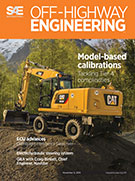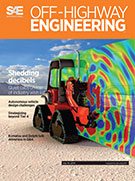Magazine

SAE Vehicle Electrification 2011-11-30
2011-11-30
The buzz about electric aircraft Emissions limits force the aviation industry to study hybrid and battery-electric propulsion systems. Car-to-X marks the secure beamforming spot Intelligent networking of cars and infrastructure promises a future of enhanced active safety and traffic efficiency, though as an open and decentralized system, car-to-X is exposed to various attacks against security and driver's privacy. Talking big A look at factors that should be considered by OEMs when implementing a telematics solution in the heavy-duty on- and off-highway mobile equipment markets.



















